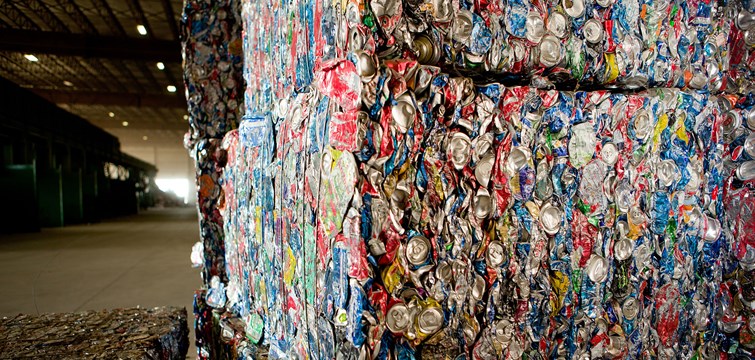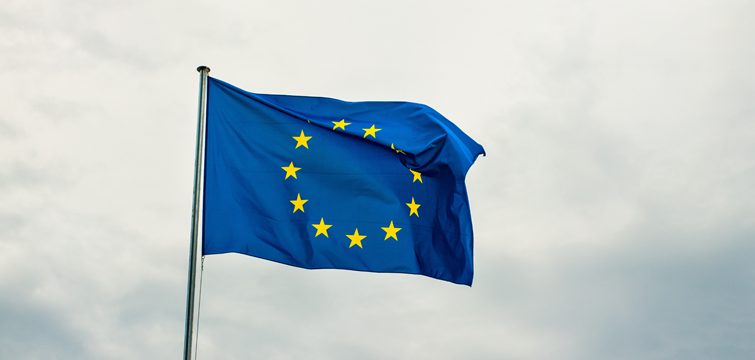The German WEEE authority Stiftung EAR has recently published detailed guidance on the new WEEE reporting categories to be introduced next year.
Here we take a look at how this will impact current and future registrations and what actions producers must take. Essentially this update affects anyone registered for WEEE in Germany, or those planning to export there in the future. This move makes Germany one of the first EU countries to confirm the exact nature of category changes under so-called Open Scope, and maintains the deadline set by the Directive, the 15 Aug 2018.
The UK is as yet unsure how any category changes will be introduced domestically, and has only set an implementation date from 1 January 2019.
What is set to change?
Under the current WEEE Directive 2012/19/EU (WEEE 2), the transition phase into Open Scope will end on 14 August 2018 and from the day after, the scope of the Directive is widened to include all EEE, unless specifically excluded.
Alongside this change, the current ten WEEE categories will change to six, with some of these new categories introducing a “dimension-based” limit to determine where a product might be scoped and reported going forward. The new categories are as follows:
Category 1: Temperature exchange equipment
Category 2: Screens, monitors, and equipment containing screens having a surface greater than 100 cm2
Category 3: Lamps
Category 4: Large equipment (any external dimension more than 50 cm) including, but not limited to: Household appliances; IT and telecommunication equipment; consumer equipment; luminaires; equipment reproducing sound or images, musical equipment; electrical and electronic tools; toys, leisure and sports equipment; medical devices; monitoring and control instruments; automatic dispensers; equipment for the generation of electric currents. This category does not include equipment included in categories 1 to 3.
Category 5: Small equipment (no external dimension more than 50 cm) including, but not limited to: Household appliances; consumer equipment; luminaires; equipment reproducing sound or images, musical equipment; electrical and electronic tools; toys, leisure and sports equipment; medical devices; monitoring and control instruments; automatic dispensers; equipment for the generation of electric currents. This category does not include equipment included in categories 1 to 3 and 6.
Category 6: Small IT and telecommunication equipment (no external dimension more than 50 cm)
Producers of EEE are rightly concerned of the impact this will have on maintaining and reporting their data, how products are scoped and in what way this will affect recycling fees in future.
Won’t these categories all be the same across Europe?
This is a question that currently goes unanswered, but a strong suspicion is that although member states must transpose the above six categories under WEEE 2, they may still introduce a number of sub-categories for administrative and pricing purposes.
This is certainly the case with the current ten WEEE categories, where some EU countries use over twenty sub-categories for example, much to the annoyance of companies selling internationally who are obliged to deal with numerous reporting formats.
The European Commission FAQ on WEEE Directive 2012/19/EU states that:
“Member States and other relevant actors are free to design and use additional (sub-) categories, as long as reporting to the Commission is in line with the requirements of the Directive.”
In addition, a recent draft Implementing Regulation, aimed at harmonizing WEEE registration and data reporting formats across Europe, also explicitly allows for the introduction of sub-categories at national level.
The 2018 WEEE category changes confirmed by the German authorities earlier this month do include sub-categories and presumably other member states will follow suit.
What are the changes in Germany?
To allow producers to prepare for changes coming into effect in August 2018, Stiftung EAR has published comprehensive guidance on it’s web page. This is only available in German, but below is a summary of the main points. Producers are welcome to contact us for more information.
New WEEE Categories
From August 2018, Germany will use the six categories as per WEEE 2, with seventeen sub-categories.
Most subcategories will be to differentiate B2C from B2B equipment, e.g. the new category 6. Small IT and telecommunication equipment (no external dimension more than 50 cm) will have two subcategories, one for equipment exclusively used in private households (B2C) and another, equipment exclusively for commercial use (B2B).
This is principally in line with current German WEEE categories, which also include a main category, and some subcategories (also called “equipment type”).
The new system will introduce separate subcategories for PV modules under either new category 4. Large equipment (> than 50 cm) or 5. Small equipment (< than 50 cm).
New category 3. Lamps will consist of three subcategories for Gas discharge lamps (GDL) used exclusively in private households, lamps other than GDL used exclusively in private households, and lamps exclusively for commercial use.
Note that luminaires for use in private households – already in scope for WEEE in Germany since February last year - will be scoped into cat. 6. Small equipment, but see below for further information on scoping and registration.
New and existing registrations
Producers in Germany must have an active registration for every brand they sell, and in every applicable category and sub-category. A WEEE producer selling monitors, printers and mobile phones for example, will currently be registered in each respective sub-category under the main IT & Telecoms Equipment category. The category changes therefore do not only impact data reporting, but also producer registrations in Germany.
Deadline and required actions
Producers have until 31 December 2018 to ensure that their products are registered in the correct 2018 WEEE categories and sub-categories. Note however that registrations in Germany are not instantaneous and require approval – and this can take up to three months.
Our advice is to review any current registrations, and plan for future ones, early in 2018 and act well in advance of the deadline. The take-away point here is that producers of existing and/or new registrations are responsible to ensure they have all valid registrations in place by 31 December 2018.
New registrations
Producers of EEE newly in scope from August 2018 should hand in registrations from 1 May 2018. Given the typical approval time of 8-12 weeks, producers may experience additional delays due to an increase in registrations at this time.
Existing registrations
Stiftung EAR confirmed that it will transfer all current registrations into the new categories on 26 October 2018. However this does not mean that there won’t be any scoping or administrative work required by companies already registered!
EAR will action two types of transfers depending on these categories:
“Definite transfer” categories, in which the current category will change without question into the 2018 one
and
“Automatic transfer” categories which producers must review and if required, amend through a new registration.
To give an example of each:
Registrations for cameras, currently scoped under “Cameras (Photo)” will definitely transfer to the new “small equipment (B2C)” subcategory.
Registrations for PV modules on the other hand will automatically transfer to the new “large photovoltaic modules” subcategory.
The classification of “large” will be the default, but may of course be incorrect if PV modules sold are below the 50 cm dimension threshold. If so, then this product requires a new registration under the “small PV modules” subcategory introduced in 2018.
The 50 cm split also means that producers may need more than one registration if they sell a type of product, for example toys, which could be either below or above the 50 cm dimensions.
There are resources available online to help with this including information on transfers that can be found here, in addition to plenty of transfer examples, a decision tree, definitions / misinterpretations, and a transfer simulation (web application) producers can use to assist them in scoping.
Costs for registration and financial guarantee
Every administrate activity at the WEEE register, Stiftung EAR, incurs a cost, set by law in a Fee Ordinance.
For EEE newly coming into scope on 15 August 2018, producers will pay the applicable registration fees (per brand and category), as detailed in the Fee Ordinance. Producers registering for the first time next year, or adding registrations, will also be charged as before.
Any existing and fully approved registrations are transferred by Stiftung EAR, on 26 Oct 2018, free of charge. However, producers selling products in the “automatic transfer” categories may need additional registrations, for which they will also incur a cost.
Any 2018 financial guarantee amounts required by B2C producers in case of insolvency will remain unaffected by this change and are chargeable as before. Producers of newly in scope EEE, or handing in registrations after August 2018, will need financial guarantees in the new 2018 categories.
What you need to do next
It is incredibly important that any existing WEEE registrations in Germany are reviewed, and that companies planning to sell EEE into Germany next year are familiar with these changes and the impact.
Selling EEE into Germany without a fully approved WEEE registration is illegal, and a registration must be in place before you sell. Incorrect registrations carry the same fine (EUR 100,000) as not having one at all, and we expect an increase in anti-competition proceedings against non-compliant producers next year.
If you are unsure whether you need a registration, or if you need support with WEEE in Germany, please contact us for help. We advise you do this sooner rather than later!
Exporting producers should be aware that changes to WEEE reporting categories will affect all European countries that transposed the WEEE Directive, and that the majority will take effect in August 2018.
Visit our website for up-to-date news and webinars on international developments for WEEE, as well as batteries and packaging.
Not sure where to start or need more information?
We can offer consultancy to help producers find the right compliance partner in Germany, or provide regulatory overview sheets, detailing all requirements and options.
For details or samples, please contact our team of specialists by emailing info@ecosurety.com or calling 0333 4330 370.
Useful links
The recently published Q3 collection data indicates a steady progression toward the annual target, currently reaching 76%.
Read More >>In the second quarter of 2023, the WEEE collection figures show that a total of 118,953 tonnes of WEEE has been collected from households across April – June, which is a 3% increase compared to Q1 collections.
Read More >>Across the first quarter of 2023, a total of 120,433 tonnes of household WEEE has been collected, showing a slight increase of 562 tonnes compared to WEEE collected in Q1 2022.
Read More >>



